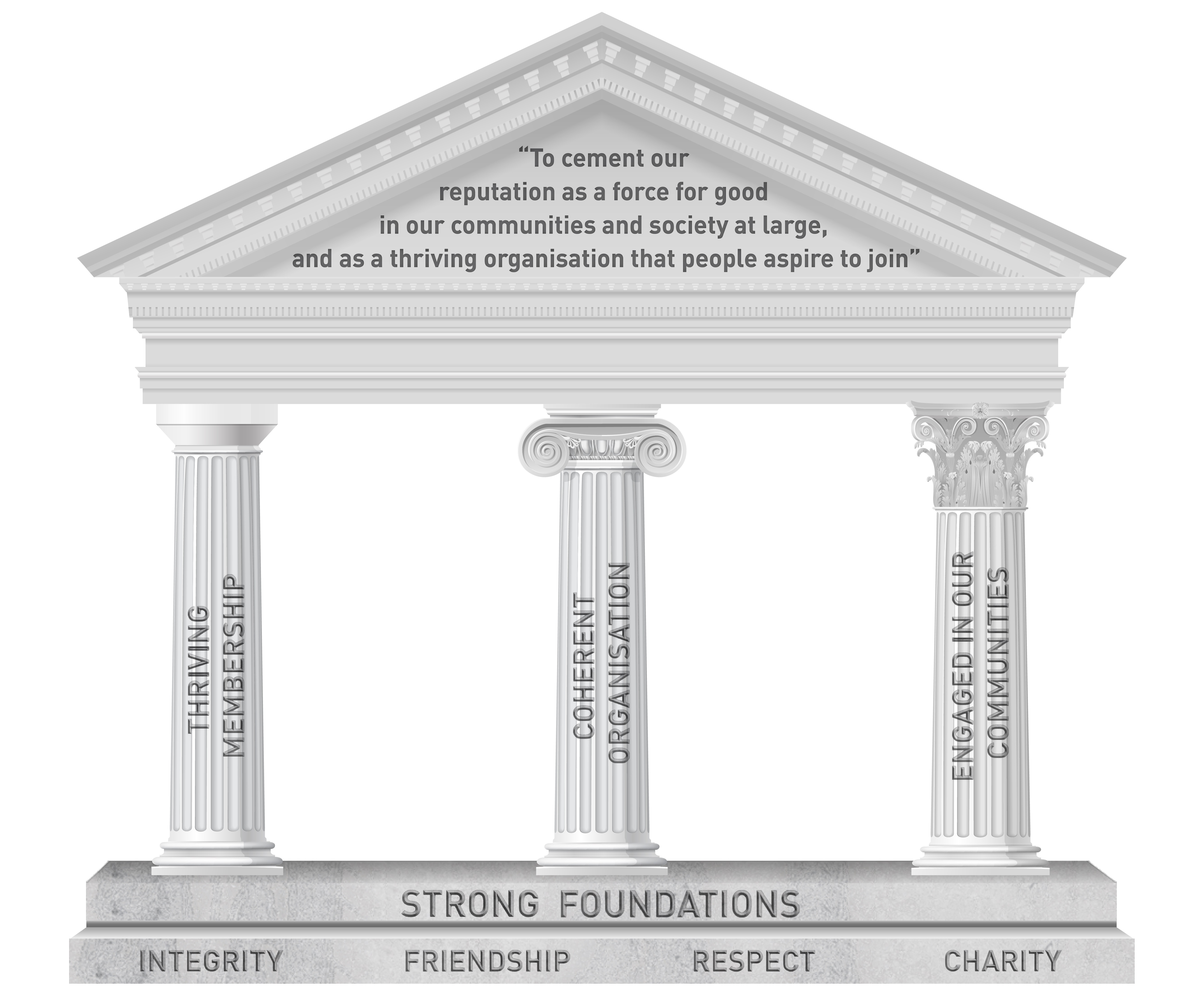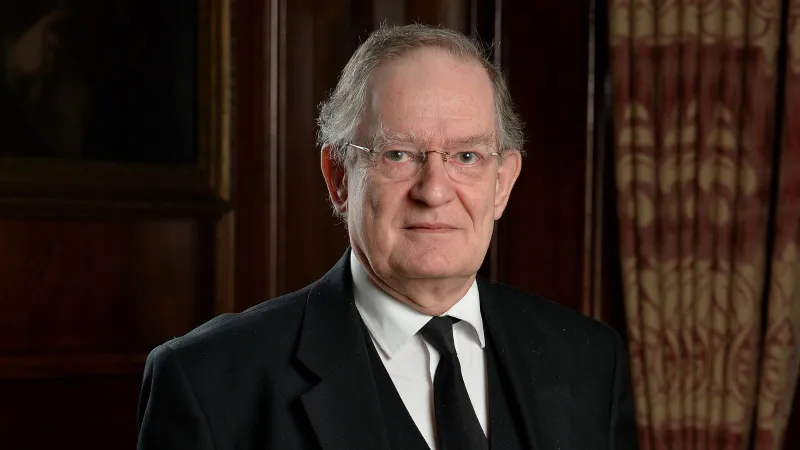
The current strategy was formed in 2022 under the Pro Grand Master’s leadership to develop our approach for the next seven-year period. So why do we need one? While most major organisations have a public strategy, we can assure you this is not a tick-the-box exercise or to follow some trend or fad. Our aim is simple: to cement our reputation as a force for good in our communities and society at large, and as a thriving organisation with people aspiring to join us.
Freemasonry has been an important part of the development of our society for more than 300 years. The impact of our charitable efforts and member contributions cannot be overestimated. However, a slow but steady decline in our membership numbers threatens our relevance to a wider society and our ability to have a positive impact on local communities.
On average, there has been a 2.5 per cent annual decline in our membership each year across England, Wales, the Channel Islands and the Isle of Man since 2008, taking us from around 200,000 members 10 years ago to a little more than 150,000 today.
While we have made great progress over the past year with initiations, this is really only reversing the impact of the pandemic. Even with this substantial increase, we still had a slight decline in members overall. Importantly, these losses are not coming from where you would think. Although we are, on average, an older organisation, death in this situation is not the enemy. We lose far too many members to resignation, cessation and exclusions, including those who quietly drift away. It almost completely negates all the excellent work we have done in bringing new initiates into the Craft and our membership challenge is to close this gap.
At present, we either need to increase initiations by 46 per cent or reduce resignations accordingly. The ideal practical reality would be a mix of the two.
One particular statistic is that 17 per cent of new initiates are lost within three years of joining. This is an average for UGLE. In some Provinces, the figure is 30 per cent. Others leave later for a number of reasons, including Lodge closures, usually because they have moved to a different part of the country and don’t rejoin a Lodge, or simply because they have stopped enjoying their Freemasonry. All of this is avoidable.
The Temple is set upon strong foundations – these are the practical and logistical elements that UGLE and the Provinces need to deliver for you as a best-in-class organisation. There are three pillars. The first is Thriving Membership, which is critical to tackling the membership challenge and is about attracting new members and ensuring their experience keeps them in Freemasonry for life. It also sets out how we can engage with existing members, ensuring that Freemasonry remains relevant and enjoyable for them, particularly those who attend their Lodge infrequently.
The second pillar, Coherent Organisation, sets out how we, across all levels of our organisation, must act as one in delivering the strategy. Everyone, from the Grand Master to the newest entered apprentice, has a duty and a responsibility to support the success of our organisation. Without our membership pulling in the same direction, the strategy will fail.
The third pillar, Community Engagement, is what we already do so well. We must build upon our charitable works and member contributions to their communities and wider society as a whole, to ensure we continue to promote a positive and attractive profile and image for Freemasonry. To be clear, our ultimate goals are immensely achievable. We aren’t talking about setting unrealistic targets, such as 20 per cent growth in membership. Rather, our approach is for slow and steady increases in our numbers.
The aim is to grow the membership by 1 per cent per annum by year three, and 2 per cent per annum by year seven – which marks the end of the strategy period. This should set us on a sustainable growth trajectory as a nationally relevant and thriving membership organisation for the next 300 years.
Every Freemason has a part to play, no matter where they sit in our organisation.
Four steps to success
Strong foundations
- Implement an investment plan (people, capabilities and technology) to support delivery of the strategy
- Tap into our talent base, identifying and using members’ skills and talents, whatever their rank
- Update the Book of Constitutions, ensuring that it is fit for a modern membership organisation
Thriving membership
- Constantly reinforce the concept of our unique combination of fun/sociability and serious and timeless core values
- Address the ‘membership challenge’ at all levels, encouraging innovation, embracing change and spreading successful ideas
- Further enhance our members’ understanding of our history and values
Coherent organisation
- Communicate clear, concise and consistent messaging within UGLE and beyond
- Empower and enthuse our members, supporting them with the tools and knowledge to act as ambassadors and become our future leaders
- Further develop the RCG structure to maximise local impact across traditional provincial boundaries
Community engagement
- Build on the recent success of our members’ response to the pandemic in their local communities and of our partnership with the MCF and other local and national charities
- Identify new areas for engagement in our communities
- Communicate more openly and explicitly the full scale and community impact of members’ current engagement through charitable donations and volunteering





